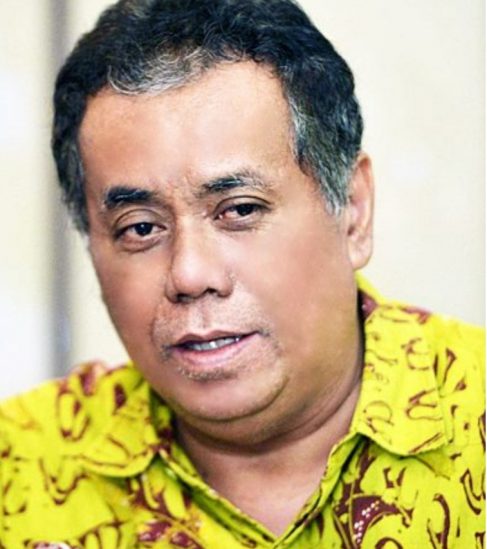Ari Kuncoro: Analyzing Recession
Nino Eka Putra ~ FEB UI Public Relations Officer
DEPOK – Tuesday (29/9/2020) Kompas daily published an article written by Professor Ari Kuncoro, Rector of Universitas Indonesia, entitled “Analyzing Recession”. Below is the complete article that appeared in the Economic Analysis section of the paper.
“Analyzing Recession”
The government has revised down the economic growth forecast for the third quarter of 2020, from minus 2.1 percent to minus 2.9 percent. Even without the revision, Indonesia has technically slid into recession after two consecutive quarters of negative economic growth.
A number of countries have imposed strict lockdowns for a V-shaped recovery. In fact, after a negative growth in the first quarter of 2020, Indonesia’s economy contracted even deeper in the second quarter of 2020.
As a case in point, the European Union (UE) plunged into recession in the first quarter of 2020. European economic growth shrank even deeper, from minus 3.2 percent to minus 11.7 percent, in the second quarter. The anticipated V-shaped recovery after lockdowns did not occur.
A U- or even-L-shaped recession is likely with possible lockdowns in the EU and US due to the second wave of the Covid-19 infections that has practically disrupted human mobility. In fact, human mobility has kept the services sector, including small businesses, running and is a key contributor to growth.
China is the only country with a V-shaped recovery in just one quarter, allowing it to avert recession. After a 6.2 percent contraction in the second quarter, China posted positive growth in the next quarter. It was not mere coincidence. After the lockdown was lifted, China offered stimuli, including US$1,400 worth of subsidy for every car purchase. China’s automotive industry imports very little of foreign content and relies mostly on domestic supply of spare parts. Its operating leverage is also high, with around 40 million people working in the supply chain sector of the automotive industry. This explains why China’s Purchasing Managers’ Index (PMI) recovered faster compared to other countries. The PMI represents industry expansion (above 50).
New pattern
Although Statistics Indonesia has yet to announce third-quarter gross domestic product (GDP) data, the government has confirmed that Indonesia has plunged into recession. However, Indonesia is different from the UE, the US and China. The UE and the US saw their economies contract deeper for two consecutive quarters. China rebounded to positive growth in just one quarter. According to government prediction, Indonesia had plunged into recession but could avoid a deeper contraction in the third quarter.
There are several key factors behind the pattern. First, consumer expectations that are indicated by the Consumer Confidence Index (CCI), which hit rock bottom in May, at 77.8. The CCI improved to 86.9 in August following the relaxation of the large-scale social restrictions. However, the recovery was quite slow, at 11.7 percent between May and August, or 3.74 percent per month. This is because expectations for income, employment opportunity, and future business prospects, while still optimistic, were not as high as the previous month.
Second, the index of new orders of durable goods improved slightly, from 66 in June to 68.5 and 71.8 in July and August, respectively, resulting in a significant increase in the CCI to enter the expansion zone, from 46.9 in July to 50.8 in August. This is good news for the manufacturing industry.
A lesson learned from the 1998 crisis is that the trade, accommodation and restaurant sectors recovered faster than the manufacturing sector and had higher leverage. As the trade, hotel, restaurant and tourism sectors are still stagnant, their recovery is only sufficient to curb contraction but not strong enough to drive the economy into positive growth. Public consumption patterns have also changed due to the pandemic as people prioritize durable goods, such as household goods and gadgets, over travel and eating out. Instead, people now make short trips, ride their bikes and do morning runs on weekends.
Bank Indonesia’s latest CCI survey showed that people earning more than Rp5 million per month and have undergraduate degrees tend to be more pessimistic compared to other groups. This has affected the consumption patterns. Although scrimping is normal in this era of uncertainty, being too thrifty will hamper recovery according to the paradox of thrift concept. An increase in bank savings indicates that earnings are concentrated in the middle class in big cities in Indonesia. Per July, the amount of customer savings in banks grew 6.12 percent to Rp 313 trillion from the end of 2019. In July 2019, the amount of customer savings only grew 3.45 percent to Rp197 trillion. It looks like people’s perception of health has influenced public consumption patterns, particularly among the middle-income group.
To break the deadlock, the Ministry of Transportation collaborated with several prominent universities in Indonesia to find safe and healthy modes of transportation. However, this effort is not enough without public education and stricter implementation of the 3M concept, which is to wear a mask, to maintain a safe distance, and to wash your hands. This habit should be maintained even after a mass vaccination.
In general, without any change in the health perception and consumption patterns, a V- or U–shaped recovery is not likely. Instead, a ”tick-” shaped or square root (sloping) recovery is more likely. Economic growth will improve slightly in the fourth quarter of 2020 although still within the negative zone. Higher absorption of the national economic recovery funds will also determine whether Indonesia will see zero growth or even achieve positive growth. (hjtp)
Source: Kompas daily, Tuesday, 29 September 2020 edition, Economic Analysis Section, Page 1, continued to Page 15.

